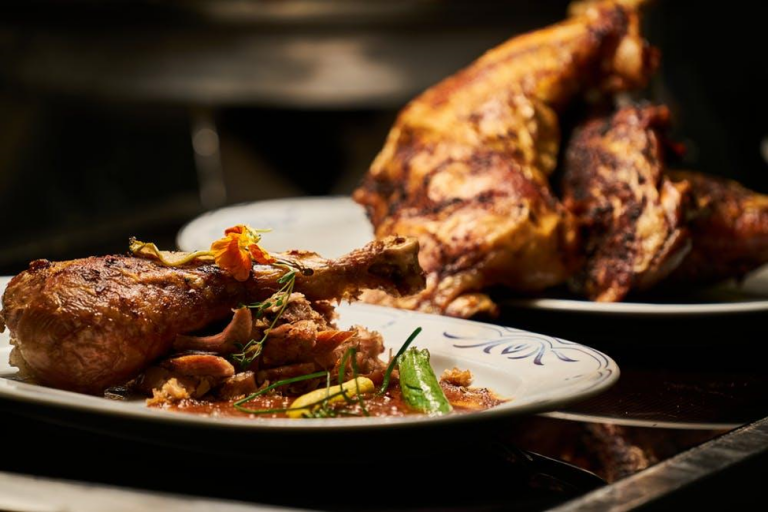
A guide to roasting meat, fish, poultry, and vegetables!
(sources listed at the end)
Meat
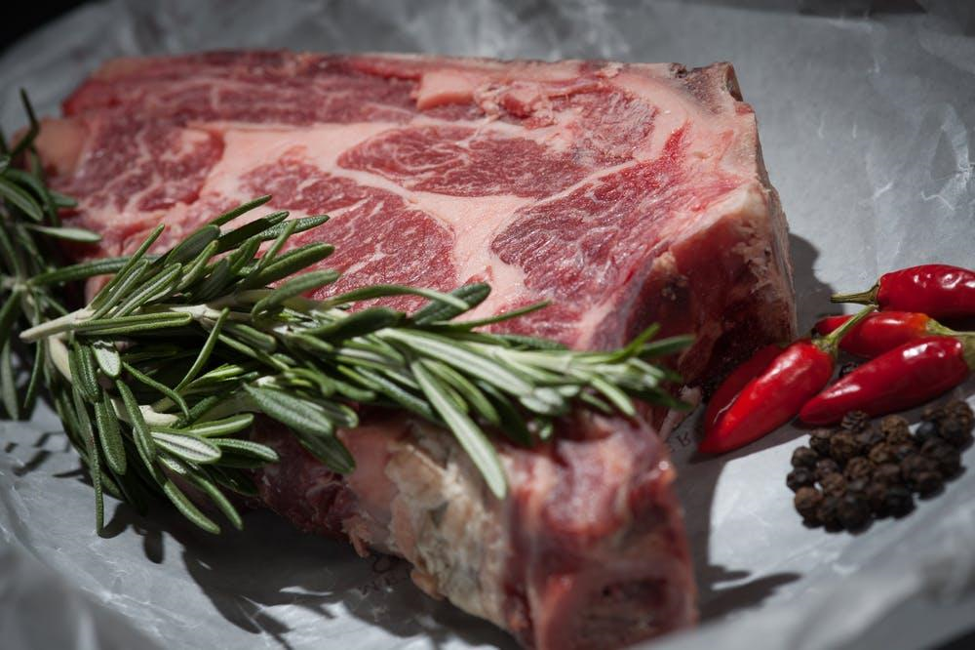
When it comes to roasting beef or veal, you have to consider the type of cut that you are cooking. For example, there are several areas of the beef carcass and veal carcass that are used.
- Shoulder
- Rib
- Breast
- Leg
- Loin
- Flank
- Tip
Just to name a few.
Then from each of the sections of the carcass are different “cuts” of meat.
- Shoulder = blade steak
- Rib = rib eye
- Breast = boneless breast roast
- Leg = top round steak
- Loin = loin chop
- Flank = beef patties
- Tip = tip kabobs
Certain cuts of beef or veal can be cooked with high heat methods. For example, rib cuts and tenderloin cuts are both tender cuts of meat and would cook nicely with high heat roasting. Alternatively, tougher cuts of meat would only become tougher. Therefore, tougher cuts of meat would better be prepared by poaching which uses liquid to make the meat more tender.
Tip: using a meat thermometer to tell if the meat is cooked properly is your best bet. Below is a brief roasting chart for meat in this category.
| Cut | Approx. weight in pounds | Oven Temp (Fahrenheit) | Thermometer reading(after roasting) | Thermometer reading (after resting 5 minutes) | Cooking time (minutes per pound) |
| Beef-Rib | 2-3 | 325 degrees Fahrenheit | 140 degrees Fahrenheit | 145 degrees Fahrenheit | 20-22 |
| Beef- Tenderloin | 4-6 | 425 degrees Fahrenheit | 140 degrees Fahrenheit | 145 degrees Fahrenheit | 45 – 60 minutes total |
| Veal- Loin (bone-in) | 2 – 4 | 325 degrees Fahrenheit | 34 – 36 | ||
| Veal – shoulder (boneless) | 2.5 – 3 | 325 degrees Fahrenheit | 31 – 34 |
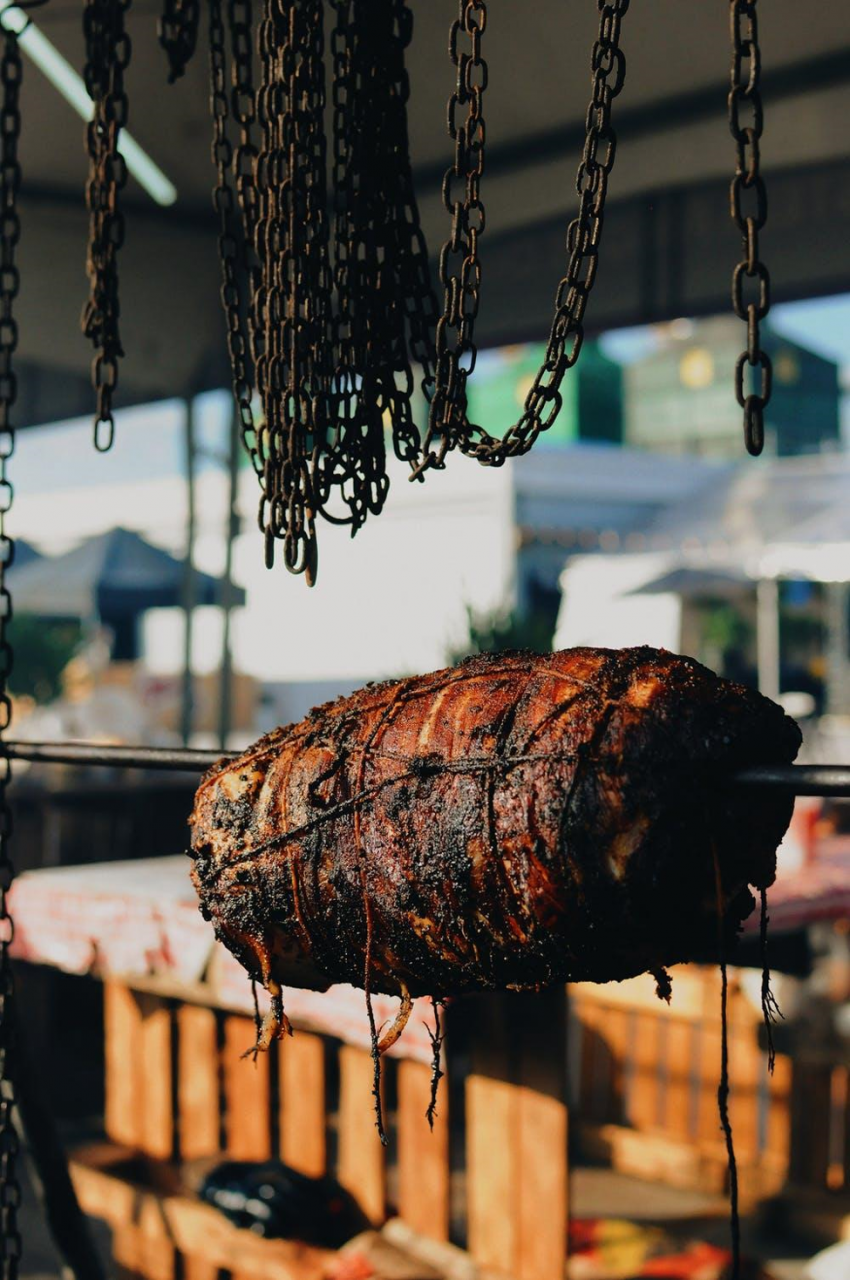
The book (1) also mentions some tips about roasting cuts of pork.
- Avoid burning the outside of the pork by placing it at least 3 inches from the heat source
- Fresh pork = 20 – 25 minutes per inch of thickness. Smoked pork = 15 – 20 minutes per inch of thickness
- Add fat by boarding, boiling or basting the outside
- Cook completely, use best thermometer for verification
- Overcooking = drying out
*Consult the package or your butcher for correct internal temperature!*
Fish
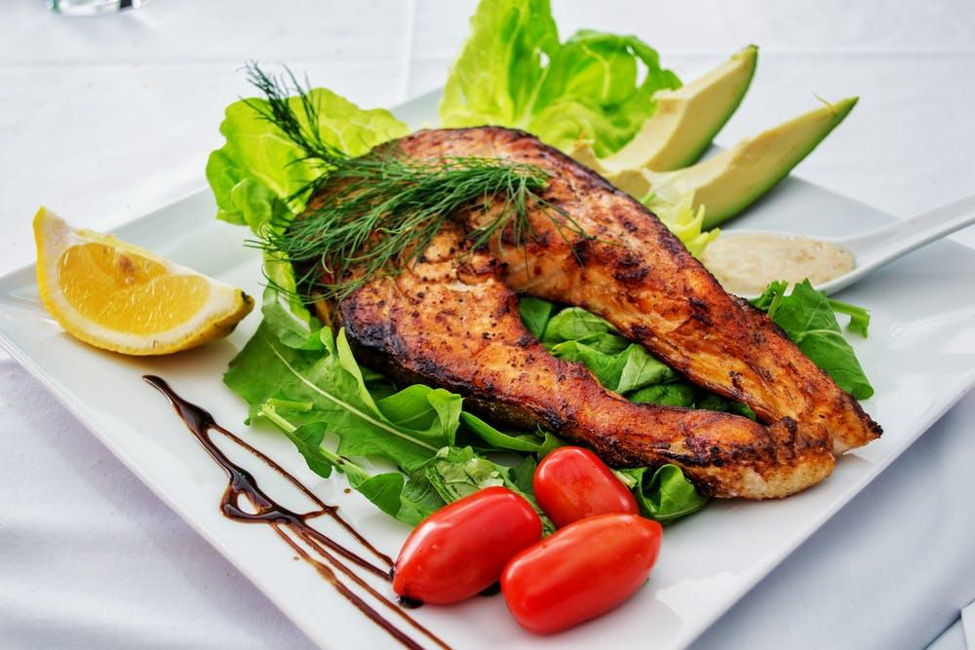
When it comes to fish, it is not “roasted” in the oven, it is “baked” in the oven. So these tips from the book (1) are about baking fish.
- The baking process can be drying to fish, so adding moisture is important. This can be done with butter, oil, or the fish can be wrapped in foil or leaves and bake in its own juices.
- Flavor can be added through stuffing, herbs, spices, lemon, and butter
Poultry
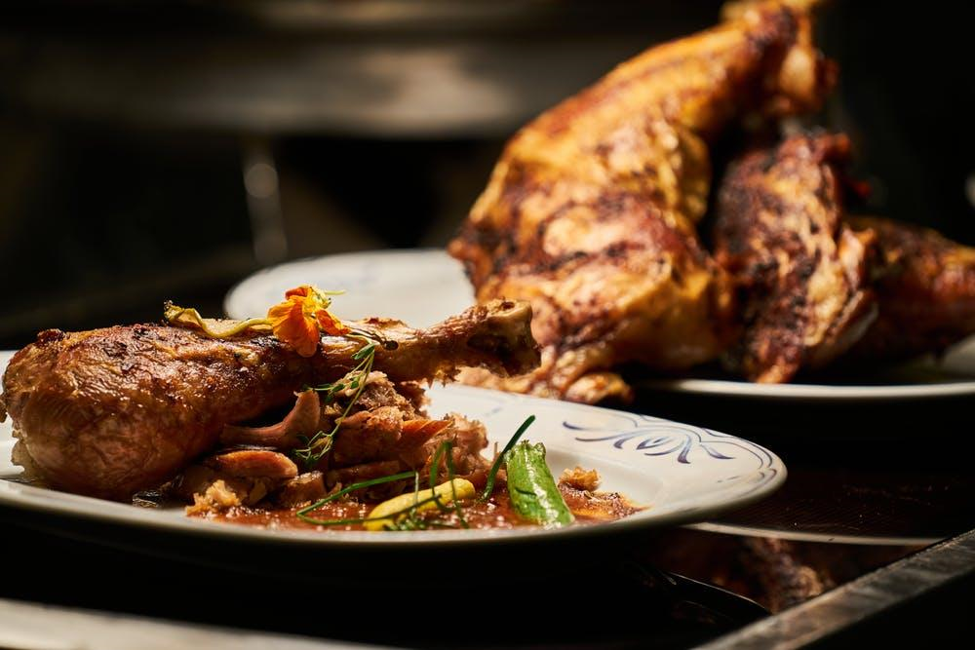
Roasting poultry is an appealing and delicious form of cooking bird. This method creates a crispy and tasty outer skin while the inner meat of the bird is juicy and tender! However, poultry can be overcooked and can dry out if left to roast too long.
- Consider adding butter under the skin layer, stuffing inside the cavity, basting the outer skin layer with poultry juices and trussing the wings and legs to ensure even cooking and help prevent drying out or loss in flavor.
Vegetables
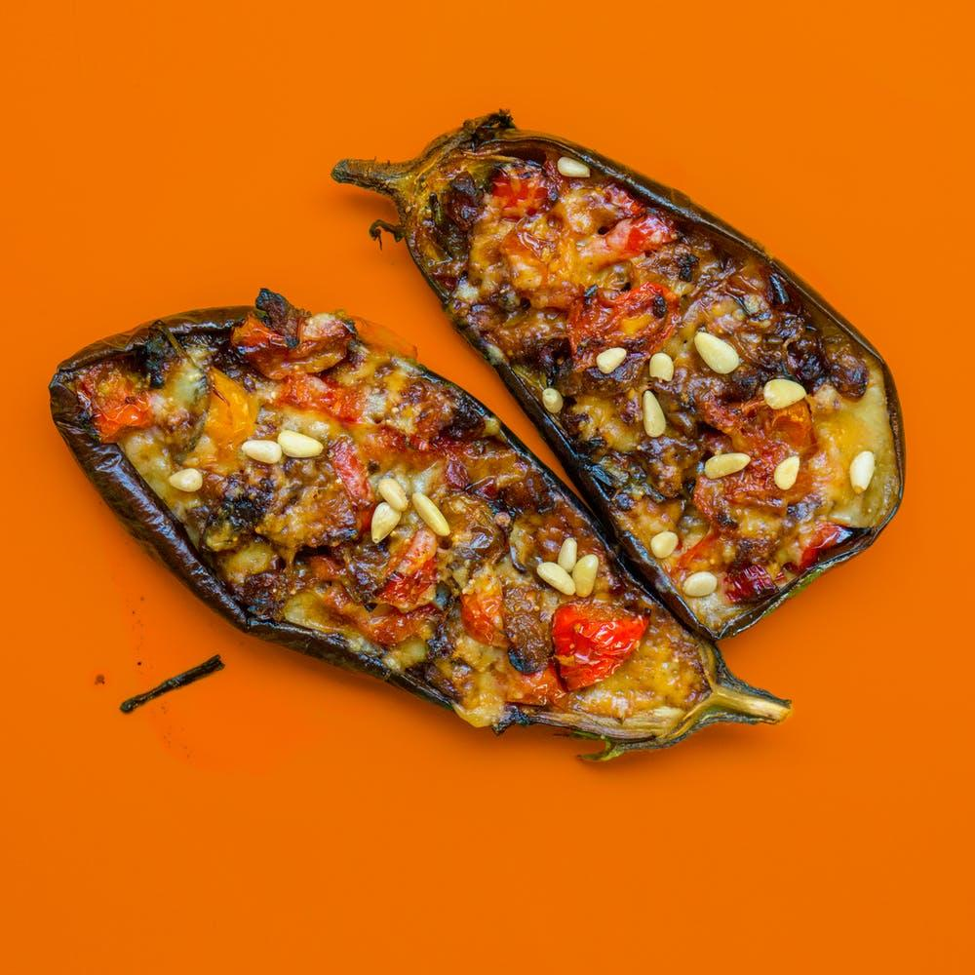
Finally, roasting vegetables is a popular method and the book (2) provides tips on how to cook them properly.
- Potatoes and other starchy vegetables benefit from dry heat cooking similarly contender cuts of meat!
- Other vegetables, when roasted or baked, begin to caramelize from dry heat cooking their natural sugars. These vegetables are sweet and browned from this cooking method.
- Carefully monitoring of vegetables while roasting and baking will ensure they reach the desired doneness and not burn.
Roasting or baking food can be delicious and even consider easy! The important part is to choose the right type of food that can handle the dry heat, and carefully monitor the food while it is cooking to ensure it reaches ideal doneness.
Sources
- Cooking: Meats, Fish, and Poultry written by David and Sarah Miles
- Cooking: Vegetables, Grains, and Sides written by David and Sarah Miles